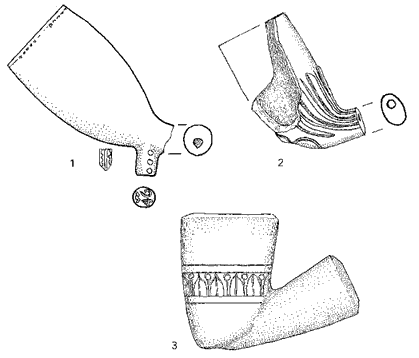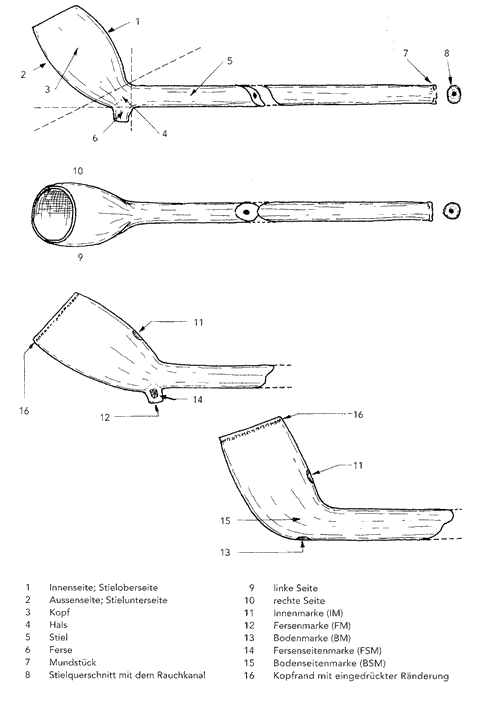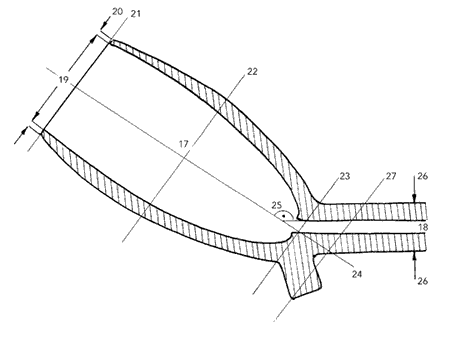
 |
|
|
Clay pipes as a research topic
Publications Meetings Links - WWW Contact us |
|
| 1. Basic types: |
||
 |
Distinguished are (1) spur pipes, (2) heelless pipes, and (3) stub-stemmed pipes |
|
| 2. The elements of a clay pipe: |
||
 |
With the aim of standardising the denominations of the different elements of a pipe, they are summarised on adjacent drawing. | |
3. The dimensions: |
The dimensions of a pipe, expressed in mm, are the following: |
|
| 4. Bowl shapes: For the classification of the bowl shapes (Basic shapes) you may refer to D.H. Duco: Merken van Goudse Pijpenmakers 1660-1940. Lochem 1982, p. 111 ( Duco ill. xy) or to Jan van der Meulen: De "gecroonde roos" en andere pijpenmakersmerken van Gouda. Leiden 1994, p. 24-31 (Meulen ill. xy). |
||||||||||||||||||||||||||||||||
 |
Feine oder Porzellanqualität
|
|||||||||||||||||||||||||||||||
| 5. Marks: No catalogues of marks do yet exist but for Gouda. The Classification of the Gouda marks follows D.H. Duco: Merken van Goudse Pijpenmakers 1660-1940. Lochem 1982 (Duco nr. xy), the identifikation of producers follows Jan van der Meulen: De "gecroonde roos" en andere pijpenmakersmerken van Gouda. Leiden 1994. (Meulen p. xy). |
||
|
|
||
|
||
| 6. Ornamentations |
||
|
Ornamentations of bowl and stem are to be described and
represented. The technique should be taken into account:
See on that subject Ralf Kluttig-Altmann: Beobachtungen
zur Technologie manueller Stielverzierungen an Tonpfeifen. Mit einem
Beitrag von M. Kügler. In: Knasterkopf - Fachzeitschrift für
Tonpfeifen und historischen Tabakgenuss. Band 14/2001, p. 32-49. |
||
|
|
||
| 7. Other criterions |
||
|
The other criterions for the registration are
|
||
Home
KnasterKOPF
Society
Sitemap
Impressum
last update: 13/11/28
Kein Teil dieses Werkes darf ohne schriftliche Einwilligung der Herausgeber in irgendeiner Form (Fotokopie, Mikrofilm oder ein anderes Verfahren), auch nicht für Zwecke der Unterrichtsgestaltung, reproduziert oder unter Verwendung elektronischer Systeme verarbeitet, vervielfältigt oder verbreitet werden.